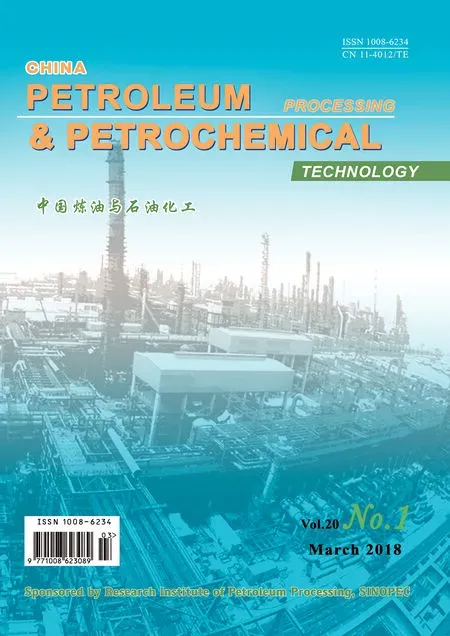Study on a New Type of Lubricating Oil for Miniature Bearing Operating at Ultra-low Temperature
Wang Zhiheng; Tao Dehua; Shen Xuejin.; Chen Xiaoyang
(School of Mechatronic Engineering and Automation, Shanghai University, Shanghai 200072)
1 Introduction
Miniature bearings are widely used in flight instrumentation. Lubricating oil, as an indispensable element for precision instrument bearings, plays a very important role in decreasing the friction and wear taking place during the operation of machine equipment[1]. The miniature bearings generally start at the room temperature and sometimes continue to work at a quite low temperature, which can be below -60 °C. In order to avoid the abnormal operation and early failure of instrument, the lubricants should have good low-temperature fluidity and lubrication performance. In general, its ISO VG should be greater than 10 mm2/s, which is a criterion for the formation of lubricating film. At present, synthetic oils, such as diester oil, polyol ester, polyether, and silicone oils[2-9], are used in miniature bearings. Yoo S. S. reported that the silicone oil is an environmentally friendly lubricant, since it can be easily recycled, with good thermal stability and excellent low temperature performance. Despite the advantages of silicone oil, it has poor lubricating properties in an environment where steel is sliding against steel because its load-carrying capacity is relatively poor[10]. Moser B.R. reported the evaluation of four oleochemical branched chain ethers and soybean oil methyl esters against cloud point, pour point, and kinematic viscosity. Each of the four synthetic branched chain ethers exhibited superior low-temperature performance as compared to SME[11],but the pour point of the lowest one was -25 °C. Fu H.R. studied the viscosity-temperature performance of base oils mixed with diisooctyl sebacate and silicone oils[12].But the experiment was only carried out at -50 °C, -40 °C,40 °C and 50 °C, while the fluidity studied at a temperature of below -50 °C was not known. Wu Y.[13]pointed out that synthetic ester is one of the important types of synthetic oils, featuring good lubrication performance and low temperature flow characteristics. However, there is no deepened study on the low temperature fluidity of synthetic ester. Liu S. Z.[14]measured the low-tempera-ture viscosity of ester oil (diisooctyl sebacate, diisooctyl adipate, and dibutyl phthalate) and two types of silicone oils at temperatures ranging from -40 °C to -10 °C. The in fluence of low temperature on these synthetic oils was studied. However, the changes in viscosity due to the structural difference between diisooctyl adipate and diisooctyl sebacate had not been analyzed. Zhang L. Y.[15]studied the viscosity of silicone oils (T3, T4) and ester oil(4122), which were used in the low and high temperature instrument bearings. These lubrications are measured with the kinematic viscometer at temperatures ranging from -30 °C to 50 °C. The fluidity was not measured at temperatures below -30 °C. Caporiccio G.[16]studied the properties of per fluoropolyether lubricants, and reported the kinematic viscosity at 20 °C and the pour point of HFP-PFE and TFE-PFPE. But the low temperature properties of the lubricants, such as lubricity and fluidity, were not investigated. Mia S.[17]adopted viscoelastic solid transition temperature under atmospheric pressure TVE0 to represents the low temperature fluidity of lubricating oil, and measured the viscoelastic solid transition temperature of paraffinic mineral oil, poly-alphaolefin, and ester oil.
Although a lot of literature reports studied the low-temperature lubricants, most of the work is focused on the study of pour point. However the pour point cannot fully re flect the low-temperature fluidity properties, in particular, the lubrication characteristics of micro bearings, such as the oil film thickness. The oil film thickness needs to be calculated according to the Dowson formula (Eq. (1)).

where Hminis the minimum oil film thickness ,is the dimensionless velocity parameter,is the dimensionless material parameter, k is the ellipticity ratio, andis the dimensionless load parameters. Thenin which η is the viscosity of lubrication, μsis the entrainment speed, E' is the equivalent modulus of elasticity, and Ryis the comprehensive curvature radius.
It can be seen from Eq. (1) that the viscosity is the main factor affecting the oil film thickness, and the oil film thickness cannot be reflected in terms of the pour point value. Thus, more detailed work should be conducted,such as the variation of viscosity with temperature, especially the situation encountered at below -60 °C. The purpose of this work is to develop a kind of new lubricating oil which has good low-temperature fluidity and lubrication performance. Firstly, the relationship of the structure and low temperature properties of synthetic oils was investigated, and the low temperature viscosity was measured to afford a reference for the low temperature properties of lubricating oil. Then based on the analytical results, a kind of new lubricant oil was developed. The performance of new lubricating oil was tested and compared with the commercial oil. The results have shown that the newly developed oil can meet the current requirements of miniature bearings.
2 Relationships between the Structure and Low Temperature Fluidity of Synthetic Oil
The chemical structure of lubricating oil has a direct relation with the performance of lubricating oil.The relationship between the structure and the low temperature fluidity of different lubricants was studied.
2.1 Experimental procedure
2.1.1 Experimental methods
The viscosity is measured at different temperatures to evaluate the low temperature fluidity of oil samples. Two types of kinematic viscosity testers were applied in these experiments, including the SYP1003-7 viscometer and the YDN-2 viscometer. The SYP1003-7 tester, is mainly used to measure the low temperature kinematic viscosity at temperatures ranging from -70 °C to 20 °C, with its display precision equating to ±0.01 °C, and its temperature control precision reaching ±0.04 °C. Ethanol is used as the coolant in the SYP1003-7 tester. Glass capillary viscometer can use diameter values in the range of between 0.4 mm to 4.0 mm according to the SY3067 specifications. The YDN-2 tester is used to measure the kinematic viscosity at temperatures ranging from -30 °C to 50 °C.
The viscosity was measured at each interval of 10 °C in the range from -40 °C to 50 °C. There is a large change of kinematic viscosity at low temperatures. Therefore,the viscosity was measured in the range from -70 °C to-40 °C at every 5 °C. The duration of each measurement is 5 minutes.
2.1.2 Lubricating oils to be tested
Eleven kinds of lubricating oils were used in the study.Table 1 gives their molecular structure and structural characteristics.
2.2 Result and Discussion
2.2.1 Relationship between the low temperature properties of dibasic acid esters and their isomers
The molecular weight of both E1 and E2 is 426, the molecular weight of E3 and E4 is 370, and their structure can be observed from the Table 1. E1 and E3 have the normal structure, while E2 and E4 are isomers due to the presence of the side chains. It can be seen from Figure 1 and Figure 2 that the viscosity of E1, E2, E3, and E4 increased gradually with a decreasing temperature. In addition, at the same temperature, the viscosity of E1 and E2 was quite close, and the lower the temperature,the difference of the viscosity between E1 and E2 would increase, but the gap was not significant. The difference between E3 and E4 was the same as that of E1 and E2. For example, at -60 °C, the viscosity of E2 was by 102.2 mm2/s lower than that of E1; the viscosity of E4 was by 69.2 mm2/s lower than that of E3; at -65 °C, the viscosity of E2 was by 145.8 mm2/s lower than that of E1; the viscosity of E4 was by 111.3 mm2/s lower than that of E3. Therefore, for the lubricating oil samples having the same molecular weight, the low temperature fluidity of lubricating oil with normal structure is closeto its isomer.
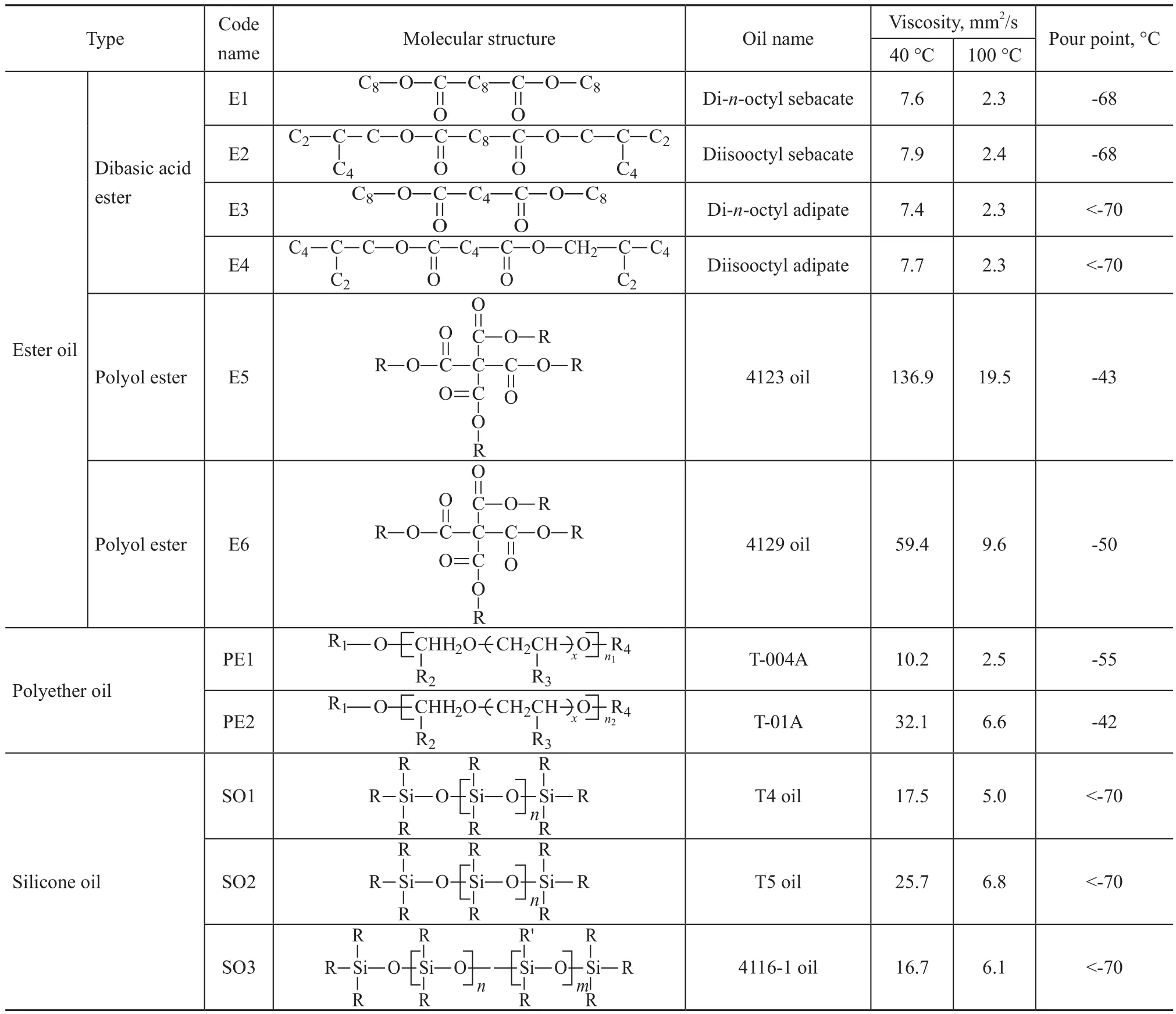
Table 1 Characteristics of lubricating oils

Figure 1 Viscosity-temperature curves of E1 and E2
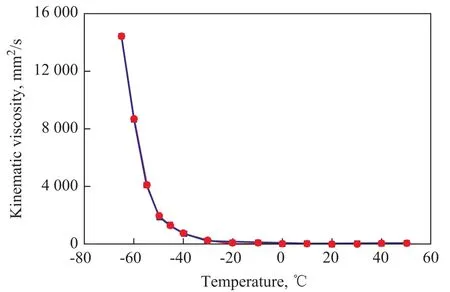
Figure 2 Viscosity-temperature curves of E3 and E4
2.2.2 Relationship between the low temperature performance and the length of the main chain of dibasic acid ester
E1, E2, E3, and E4 were used in the study. The molecular weight of E1 is by 56 more than that of E3, and the molecular weight of E2 is by 56 greater than that of E4.It can be seen from Table 1 that E1 has eight carbon chains in the symmetrical position of the main chain,and E4 only has four carbon chains in the same position.The difference between E2 and E4 in main chain is the same as that of E1 and E3. The comparison of viscositytemperature curves between several bisphenols is shown in Figure 3 and Figure 4.
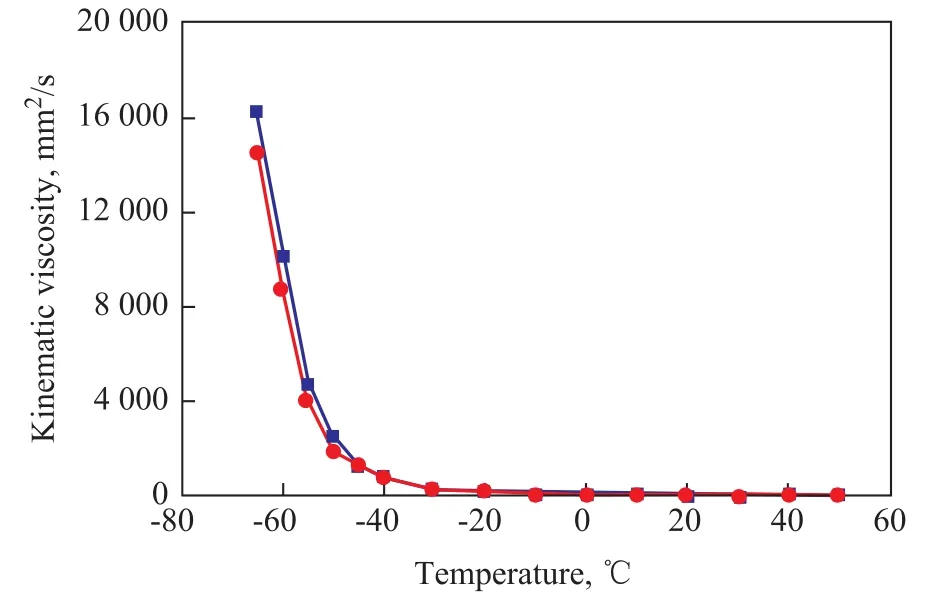
Figure 3 Viscosity-temperature curves of E1 and E3
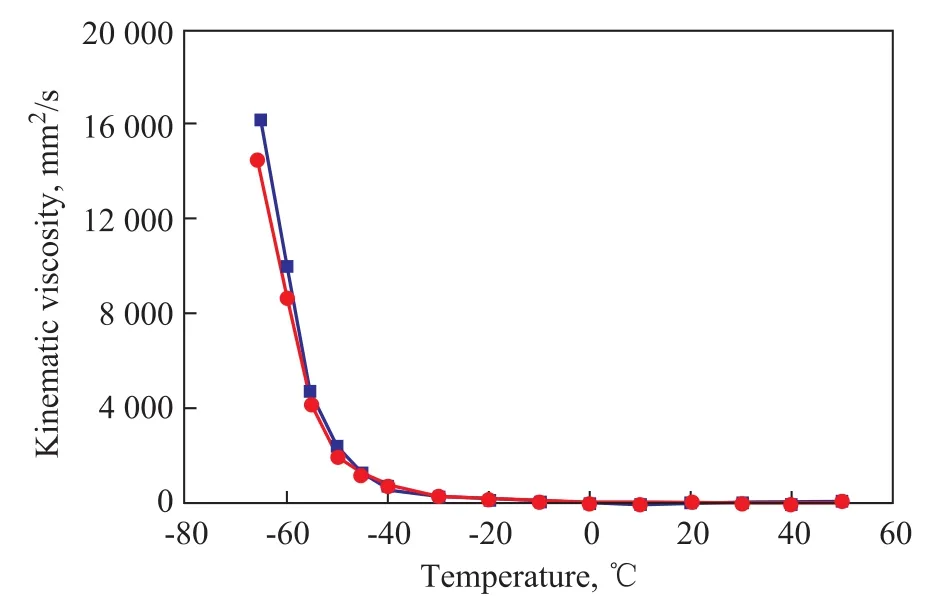
Figure 4 Viscosity-temperature curves of E2 and E4
Figure 3 and Figure 4 show that the viscosity of the lubricating oil having a long main chain was higher than that of the lubricating oil with a short main chain at each temperature measured. With the decrease of the temperature, the in fluence of the main chain length was much greater. Additionally, the viscosity of E1 increased faster with the decrease of temperature, whereas the viscosity of E3 increased slower with a decreasing temperature. The viscosity- temperature trends of E2 and E4 were the same as those of E1 and E3. In Figure 3, the viscosity of E1 is 10 033 mm2/s and the viscosity of E3 is 8 772 mm2/s when the temperature is reduced to -60 °C.The viscosity of E1 is by 1 261 mm2/s more than that of E3. In Figure 4, the viscosity of E2 is 9 931 mm2/s and that of E4 is 8 703 mm2/s when the temperature is reduced to -60 °C, and the viscosity of E2 is by 1 228 mm2/s higher than that of E4. Therefore, the fluidity of the lubricating oil becomes better with the decrease of the main chain length.
Through the above discussion and analysis, we know that the lubricating oil, which has the shorter main chain length, has better low temperature fluidity, and the effect of isomers is not significant. Judging from the study of diester lubricating oil, the ISO VG of E1, E2, E3, and E4 is all lower than 10 mm2/s, which cannot meet the requirement.
2.2.3 Low temperature fluidity of polyol ester oil
E5 and E6 are polyol ester oils. They are suitable for the oil-contained bearing which is applicable in aviation,space flight, and navigation.
As shown in Table 1, their molecular structure contains multiple ester groups. As the number of ester groups increases, the viscosity was greatly changed compared with that of diester. The viscosity-temperature curves of E5 and E6 are shown in Figure 5. The viscosity of E5 is 13 219 mm2/s when the temperature is reduced to-30 °C, whereas that of E6 is 6 046 mm2/s at the same temperature. When the temperature drops to -40 °C,the viscosity of E5 has reached 24 652 mm2/s, while the viscosity of E6 is 10 956 mm2/s at this temperature.So the low temperature fluidity of E5 and E6 is not superior.
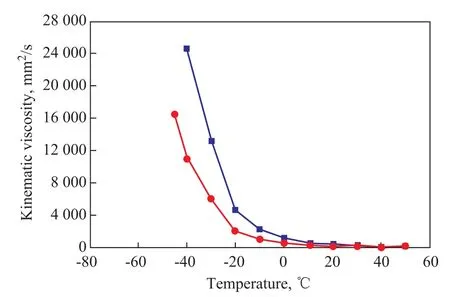
Figure 5 Viscosity-temperature curves of E5 and E6
2.2.4 Relationship between molecular weight of polyether oil and low temperature fluidity
The polyether is a linear polymer. It could be obtained by ring-opening homopolymerization or copolymerization of ethylene oxide (EO), propylene oxide (PO), butylene oxide (BO) or tetrahydrofuran (THF).
PE1 and PE2 were used to study their effect of molecular weight on fluidity. Their molecular structure can be seen from Table 1. The molecular weight of PE1 is much smaller than PE2. It can be observed from Figure 6 that the curve of PE2 is above PE1 at the same temperature. As the temperature decreases,the value of viscosity becomes larger and larger. When the temperature is reduced to -40 °C, the viscosity of PE2 is 10 times that of PE1. Therefore, the fluidity of the lubricant, which has the smaller molecular weight,becomes better.

Figure 6 Viscosity-temperature curves of PE1 and PE2
Overall, the low temperature fluidity of these two polyether oils is not good enough. They cannot flow at-60 °C.
2.2.5 Relationship between different structures of silicone oil and low temperature fluidity
Silicone oil has better low temperature performance due to its special structure. By taking methyl silicone oil as an example, its structure is shown below:

The relative atomic mass of silicon is larger than that of carbon. The entire (CH3)2Si group rotates around the silicon chain, so it can be easily wound and unwound.The role of the polysiloxane molecule is weak, and it can also be extended at low temperature. Therefore, the silicone oil has excellent low temperature performance.SO1 and SO2 use ethyl silicone oil as the base oil,whereas SO3 uses methyl chlorobenzene silicone oil as the base oil. Figure 7 shows that three types of lubricants can flow at -60 °C, because they have good low temperature fluidity. In addition, the viscosity of SO3 is less than those of SO1 and SO2 at the same temperature, so the low temperature fluidity of SO3 is the best.
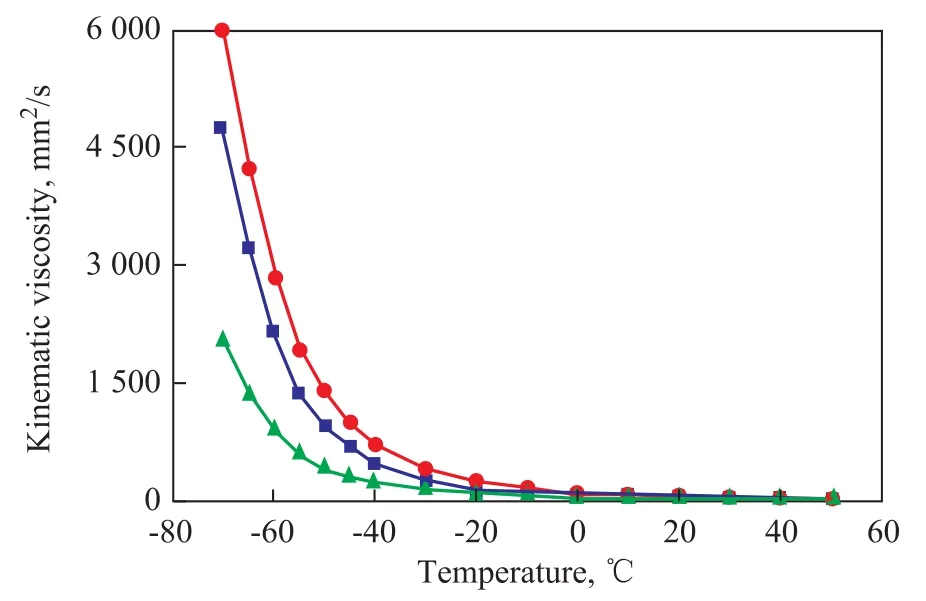
Figure 7 Viscosity temperature curves of SO1, SO2 and SO3
2.3 Comparison of low temperature fluidity of various kinds of synthetic oils
Based on the relationship between the chemical structure and the low temperature properties of the above-mentioned synthetic oils, the low temperature performance of lubricants can be obtained. The results show that the silicone oil has the best low temperature fluidity performance, followed by dibasic acid ester oil and polyether oil, and polyol ester oil performs the worst. In addition to the silicone oil, other synthetic oils cannot meet the requirements of operation at ultra-low temperature, at which the lubricating oil must flow below -60 °C and its ISO VG should be greater than 10 mm2/s at the same time. However, the lubrication performance of the pure silicone oil is poor[10]. Thus, the non-Newtonian fluid oil was further studied.
3 Development of Non-Newtonian Lubricant for Miniature Bearing
3.1 Development of the non-Newtonian oil
The non-Newtonian fluid has higher viscosity-temperature properties and better low temperature properties than synthetic oils. Its ISO VG should be greater than 10, but its viscosity would temporarily drop under high shear rate conditions and could recover when unloaded.Upon considering the working conditions of the miniature bearing oil, the viscosity of non-Newtonian fluid is almost the same as that of Newtonian fluid. The diisooctyl sebacate and mineral oil after having been subject to a deep dewaxing process (with the pour point being lower than -70 °C) were selected as base oils, and a special polymer additive of small molecular weight blended with an anti-wear agent was added. Three non-Newtonian fluid oils, including non-Newtonian-1 (NN1),non-Newtonian-2 (NN2) and non-Newtonian-3 (NN3),were obtained.
The oil products to be tested were comprised of the following components: NN1 (dioctyl sebacate + polymer additive + anti-wear agent), NN2 (mineral oil + polymer additive + anti-wear agent), NN3 (mineral oil + polymer additive + anti-wear agent). The amount of polymer additive in NN3 was twice that of NN2.
3.2 Low temperature properties of non-Newtonian oil
The viscosity-temperature curves for NN1 oil, NN2 oil,and NN3 oil are shown in Figure 8.
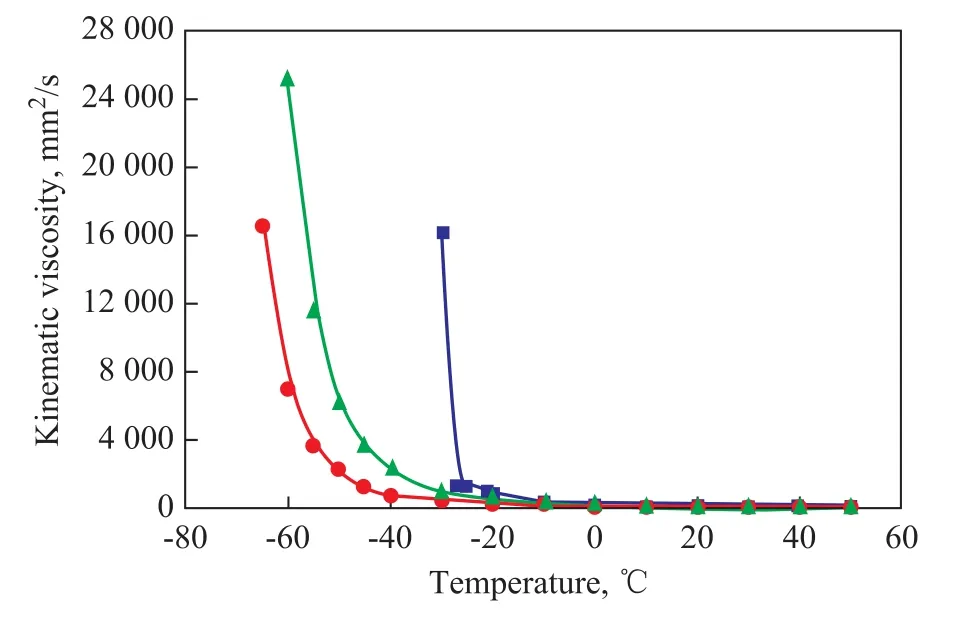
Figure 8 Viscosity-temperature curve of three types of non-Newtonian oils
The low temperature fluidity of NN1 could only reach -30 °C. NN1 obviously could not meet the requirement. The mineral oil was selected as the base oil of NN2 and NN3. The pour point of the base oil was lower than that of E3. The viscosity curve of NN2 and NN3 was relatively moderate. The viscosity of NN2 at -60 °C was 7 099 mm2/s, while that of NN3 was 25 011 mm2/s. According to the low temperature fluidity of synthetic oil which was measured in Section 2, the viscosity of E6 was close to 10 000 mm2/s at -30 °C, and E5 could hardly flow at -40 °C. The viscosity of NN2 at -45 °C was only 1 266 mm2/s. Therefore, the low temperature performance of NN2 was much better than E5 and E6. Although the viscosity of NN2 was higher than that of the silicone oil at the same temperature,it really could flow at -65 °C as compared to the silicone oil. Obviously, NN2 has good lowtemperature fluidity.
4 Lubrication Performance Test
4.1 Experimental
Four ball friction testing machine is quick and convenient in evaluating the lubricity of lubricating oil. The test was carried out on a MS-800 mechanical four-ball long-term wear test machine. Three static balls are fixed by a support plate, and the moving ball is stuck by the chuck, while the chuck is loaded and operated by a motor. After a definite period of time,the wear scar can be obtained and measured by an optical reading micro mirror. The test conditions cover a load of 196 N corresponding to a maximum contact pressure of 2 714.7 MPa, a rotary speed of 1 450 r/min,and a running duration of 30 minutes. The experiments were used to study the newly developed several non-Newtonian oils and several synthetic oils that are applied in practice. So the anti-wear performance of NN1, NN2, NN3, SO1, SO2, SO3, E5, and E6 was investigated.
4.2 Results and Discussion
Finally, the data of Table 2 and Figure 9 were obtained via the wear test conducted on the four-ball machine.
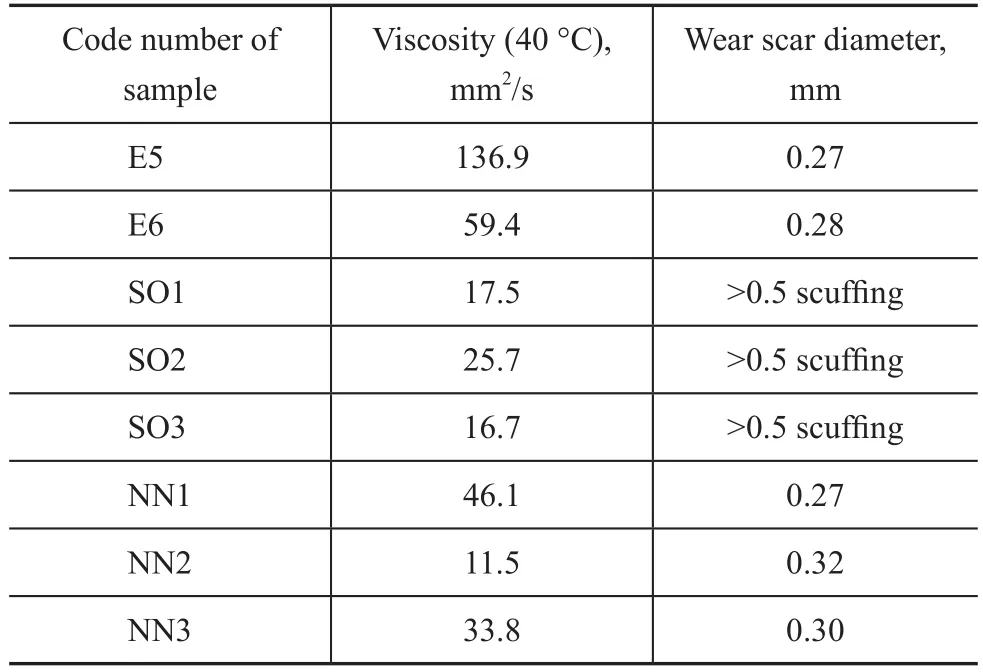
Table 2 Test results of tribological properties of lubricating oil samples
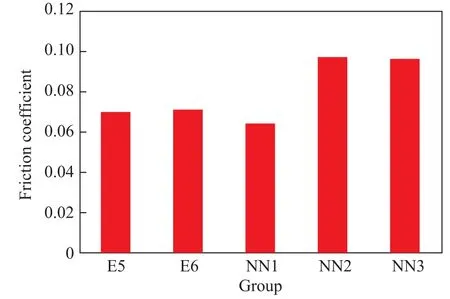
Figure 9 Comparison of friction coef ficients of five lubricating oils
It can be seen from Table 2 that the anti-wear performance of SO1, SO2 and SO3 was poor, and there was scuf fing on the contact surface of steel balls after 10 seconds of operation. NN1 had the best anti-wear property, which was close to that of E5 and E6. NN2 and NN3 were slightly worse. Judging from the friction test results, the friction coef ficients of three non-Newtonian oils, E5, E6 oil were flat over time without any ups and downs during the 30 minute. It can be seen from the bar graph shown in Figure 12 that the friction coef ficient of NN1 was the minimal, and the coefficients of friction of E5 and E6 were close, while the coef ficients of friction of NN2 and NN3 were also close, with their friction coef ficients being less than 0.1 mm. The results of comparative tests show that the lubrication properties of NN1, NN2 and NN3 were good.
5 Conclusions
(1) The relationship between the structure and the low-temperature performance of various synthetic oils was investigated. The results show that the low temperature fluidity of lubricating oil with normal structure was close to that of lubricating oil comprised of the isomers of dibasic acid ester, and the low temperature fluidity became better with a shorter molecular chain length and a smaller molecular weight of the oil.
(2) During the study of lubricating oils, the silicone oil had the best low temperature fluidity performance, followed by dibasic acid ester oil and polyether oil, while the polyol ester oil performed the worst. In addition to silicone oil, other synthetic oils could not meet the re-quirements. These requirements demanded that the lubricating oil must flow below -60 °C and its ISO VG should be greater than 10 mm2/s at the same time. Although the silicone oil demonstrated good low temperature fluidity, it had very poor lubricity.
(3) On the basis of screening, NN2 with excellent low-temperature performance was developed. This kind of lubricating oil used a special mineral oil as base oil,coupled with an added polymer of small molecular weight and an anti-wear additives. The low temperature kinematic viscometer test showed that NN2 could flow at -65 °C,and the low temperature fluidity of the NN2 was better than that of the E5, E6, polyether, and other synthetic oils.Furthermore, the low temperature fluidity of NN2 was closer to that of silicone oils.
(4) The lubrication performance tests have showed that the NN2 and NN3 had excellent lubricating ability and abrasion resistance, which were close to those of E5 and E6. The wear scar diameter of NN2 and NN3 was much smaller than that of silicone oil. Therefore, they had a promising prospect for application in the miniature bearings.
Acknowledgements:This work was carried out with financial support from the National Twelfth Five-year Projects of China for Science and Technology under Contract D.50-0109-15-001.
[1] Liu S Z, Fu H R. The influence of paraffinic base oil on low-temperature viscosity of naphthenic base oil[J]. China Petroleum Processing and Petrochemical Technology,2010, 12(1): 34–37
[2] Liu W M, Xu J, Feng D P, et al. The research status and prospect of synthetic lubricating oils[J]. Tribology, 2013,33(1): 91–104
[3] Brown S F. The advantages of per fluorinated polyethers[J].Tribology & Lubrication Technology, 2015, 71(3): 33–35
[4] Zolper T J, Seyam A, Li Z, et al. Friction and wear protection performance of synthetic siloxane lubricants[J].Tribology Letters, 2013, 51(3): 75602–75608
[5] Paredes X, Fandiño O, Pensado A S, et al. Pressureviscosity coef ficients for polyalkylene glycol oils and other ester or ionic lubricants[J]. Tribology Letters, 2012, 45(1):89–100
[6] Johnson D W, Hils J E, Forster N. Interaction of polyol esters and phosphate esters with metal carbides[J].Tribology Letters, 2011, 42(2): 223–232
[7] Sathyan K, Hsu H Y, Lee S H, et al. Long-term lubrication of momentum wheels used in spacecrafts—An overview[J]. Tribology International, 2010, 43(1): 259–267
[8] Bair S, Qureshi F. Time-temperature-pressure superposition in polymer thickened liquid lubricants[J]. Journal of Tribology, 2014, 136(2): 325–325
[9] Zhu L, Zhao Q, Wu X, et al. A novel phosphate ionic liquid plays dual role in synthetic ester oil: From synthetic catalyst to anti-wear additive[J]. Tribology International,2016, 97: 192–199
[10] Yoo S S, Kim D E. Minimum lubrication technique using silicone oil for friction reduction of stainless steel[J].International Journal of Precision Engineering and Manufacturing, 2013, 14(6): 875–880
[11] Moser B R, Erhan S Z. Branched chain derivatives of alkyl oleates: Tribological, rheological, oxidation, and low temperature properties[J]. Fuel, 2008, 87(10/11): 2253–2257
[12] Fu H R, Liu S Z. Research on viscosity-temperature performance of base oil mixed with silicone oil and ester[J]. Lubrication Engineering, 2011, 36(5): 89–91
[13] Wu Y, Li W, Zhang M, et al. Oxidative degradation of synthetic ester and its in fluence on tribological behavior[J].Tribology International, 2013, 64(3): 16–23
[14] Liu S Z, Fu H R. Low-temperature viscosity-temperature performance of ester and silicone oil [J]. Journal of Ordnance Engineering College, 2010, 22(4): 34–36
[15] Zhang L Y, Wang Y S, Cao J W. Study on viscositytemperature characteristic of lubricating oils used in high and low temperature instrument bearings[J]. Bearing,2013(10): 8–11
[16] Caporiccio G, Flabbi L, Mardhionni G, et al. The properties and applications of perfluoropolyether lubricants[J].Journal of Synthetic Lubrication, 1989, 6(2): 133–149
[17] Mia S, Ohno N. Relation between low temperature fluidity and sound velocity of lubricating oil[J]. Tribology International, 2010, 43(5/6): 1043–1047
- 中国炼油与石油化工的其它文章
- Oxidation of Dibenzothiophene in Model Diesel Using Hydroperoxide Generated via In-Situ Reaction of Octane with Oxygen
- Bitumen Recovery from Indonesian Oil Sands Using ASP (Alkali, Surfactant and Polymer) Agent
- Study on Mechanical Performance and Wear Resistance of Halloysite Nanotubes/PTFE Nanocomposites Prepared by Employing Solution Mixing Method
- Lubricating Performance of Rapeseed Oil Under Electromagnetic Field
- Preparation and Modification of Micro-Mesoporous Carbon Materials for Toluene Adsorption
- Preparation and SO2 Adsorption Behavior of Coconut Shell-Based Activated Carbon via Microwave-Assisted Oxidant Activation

